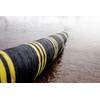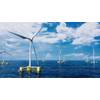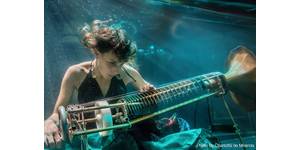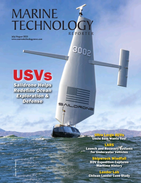The Industry Technology Facilitator (ITF) said it is welcoming additional participants to a new joint industry project (JIP) to develop pipeline anchoring and monitoring systems which could mitigate the risk of pipeline walking and cut pipeline anchor installation costs in half.
The Anchoring Pipeline Technology (APT) JIP will bring together major global operators and pipeline installation companies to collaborate with ITF and Crondall Energy, an independent oil and gas consultancy, to investigate alternative and less costly solutions and create a roadmap on how to manage and mitigate the pipe-walking challenge.
David Bruton, Director Subsea, Crondall Energy, said, “There is much uncertainty over walking rate predictions in design, leading to increased design costs and schedule overruns. In many cases, these uncertainties are resolved by installing anchors as a pre-emptive mitigation measure, which has proven to be extremely costly, not entirely successful and, in some cases, unnecessary.
“Because the evaluation of alternative, less costly, more elegant design solutions are generally beyond the timescale of a typical project, there has been little opportunity for optimization or more considered evaluation of alternatives. The knowledge gained from the APT JIP will add significant value to a client’s ability to design and install efficient and safe pipeline anchoring systems.”
Pipe-walking, or axial ratcheting, has been observed on a number of pipelines and can cause integrity concerns, including very large global axial displacements of the pipeline. In some cases, this has resulted in tie-in connector failures or subsea intervention to mitigate or control high rates of walking.
Large suction anchors, with a capacity of around 100 metric tons are typically installed at the end of the pipeline to control walking. In more recent projects, some long pipelines have required several anchors to be installed over the pipeline length.
The potential overall saving from the deployment of optimized distributed-anchoring systems is expected to be up to 50 percent of a typical installed cost. For example, this could result in a cost saving of more than USD5m for a project planning to install several anchors on a single long pipeline.
The study will complement existing research by using the extensive experience of JIP participants. It will provide design strategies to simplify the design process and present a roadmap for projects to manage and mitigate the walking challenge over the project cycle. This will include the development of a ‘wait and see’ approach based on effective monitoring of pipeline walking by applying mitigative measures only when and where they are required.
Ben Foreman, Technology Team Lead with ITF, added, “The APT JIP is focused on providing the necessary research to present viable and economical solutions to this problem and we aim to do this over a relatively short timeframe. The JIP team already demonstrates a great deal of expertise and knowledge in this subject matter and will work together to develop and test more effective, low-cost pipeline anchoring systems that are simpler to deploy, more cost-effective to install and able to be retrofitted.
“This JIP is the latest in a number of collaborative initiatives being led by ITF and we look forward to sharing progress at our annual Technology Showcase event taking place in Aberdeen in March next year.”
Crondall Energy will be exhibiting at the ITF Technology Showcase - Technology in Action at AECC on March 1. Now in its fourth year, the event brings together some of the brightest minds from inside and outside of oil and gas to challenge current thinking and bring fresh focus on progressing new solutions.
An Innovation hall will be dedicated to supporting the innovator community and showcasing the very best in new technologies, products, solutions and services. The technology sessions are facilitated by oil and gas operators with a keen interest on getting technology to market through the most effective and efficient routes possible. The three sessions this year will focus on:
- Applied Digital Technologies to Improve Operational Efficiency and Performance
- Transformational manufacturing and new materials to reduce costs
- Emerging Inspection and Condition Monitoring Technologies to Prevent Failure in Operation and Avoid Downtime
![Typical 100t pipeline suction anchor, installed on Greater Plutonio field, offshore Angola [Jayson et al – Offshore Pipeline Technology Conference 2008]](https://images.marinetechnologynews.com/images/maritime/w500/typical-pipeline-69921.jpg)














 August 2025
August 2025



